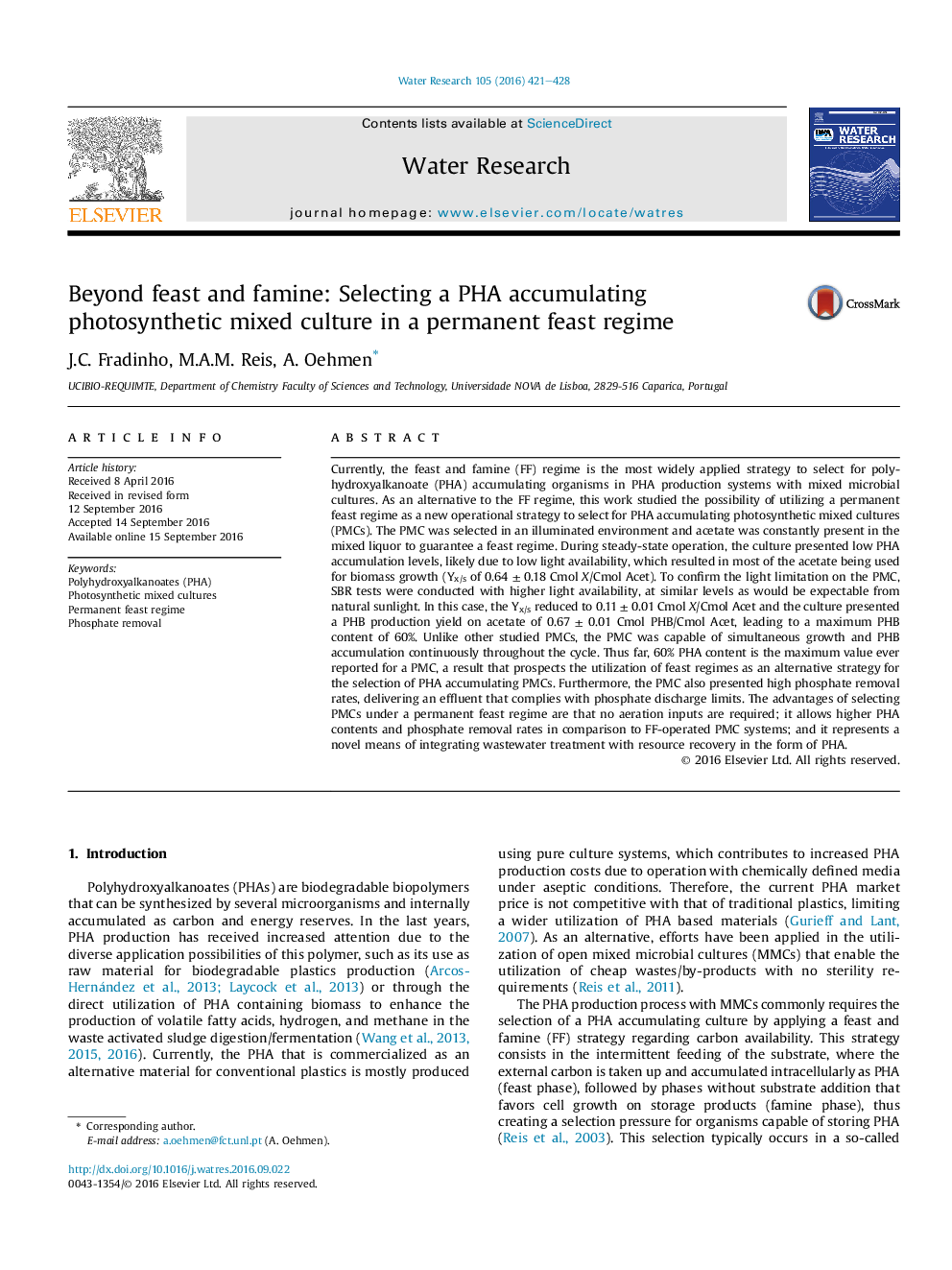| کد مقاله | کد نشریه | سال انتشار | مقاله انگلیسی | نسخه تمام متن |
|---|---|---|---|---|
| 6364617 | 1623063 | 2016 | 8 صفحه PDF | دانلود رایگان |
عنوان انگلیسی مقاله ISI
Beyond feast and famine: Selecting a PHA accumulating photosynthetic mixed culture in a permanent feast regime
دانلود مقاله + سفارش ترجمه
دانلود مقاله ISI انگلیسی
رایگان برای ایرانیان
موضوعات مرتبط
مهندسی و علوم پایه
علوم زمین و سیارات
فرآیندهای سطح زمین
پیش نمایش صفحه اول مقاله

چکیده انگلیسی
Currently, the feast and famine (FF) regime is the most widely applied strategy to select for polyhydroxyalkanoate (PHA) accumulating organisms in PHA production systems with mixed microbial cultures. As an alternative to the FF regime, this work studied the possibility of utilizing a permanent feast regime as a new operational strategy to select for PHA accumulating photosynthetic mixed cultures (PMCs). The PMC was selected in an illuminated environment and acetate was constantly present in the mixed liquor to guarantee a feast regime. During steady-state operation, the culture presented low PHA accumulation levels, likely due to low light availability, which resulted in most of the acetate being used for biomass growth (Yx/s of 0.64 ± 0.18 Cmol X/Cmol Acet). To confirm the light limitation on the PMC, SBR tests were conducted with higher light availability, at similar levels as would be expectable from natural sunlight. In this case, the Yx/s reduced to 0.11 ± 0.01 Cmol X/Cmol Acet and the culture presented a PHB production yield on acetate of 0.67 ± 0.01 Cmol PHB/Cmol Acet, leading to a maximum PHB content of 60%. Unlike other studied PMCs, the PMC was capable of simultaneous growth and PHB accumulation continuously throughout the cycle. Thus far, 60% PHA content is the maximum value ever reported for a PMC, a result that prospects the utilization of feast regimes as an alternative strategy for the selection of PHA accumulating PMCs. Furthermore, the PMC also presented high phosphate removal rates, delivering an effluent that complies with phosphate discharge limits. The advantages of selecting PMCs under a permanent feast regime are that no aeration inputs are required; it allows higher PHA contents and phosphate removal rates in comparison to FF-operated PMC systems; and it represents a novel means of integrating wastewater treatment with resource recovery in the form of PHA.
ناشر
Database: Elsevier - ScienceDirect (ساینس دایرکت)
Journal: Water Research - Volume 105, 15 November 2016, Pages 421-428
Journal: Water Research - Volume 105, 15 November 2016, Pages 421-428
نویسندگان
J.C. Fradinho, M.A.M. Reis, A. Oehmen,